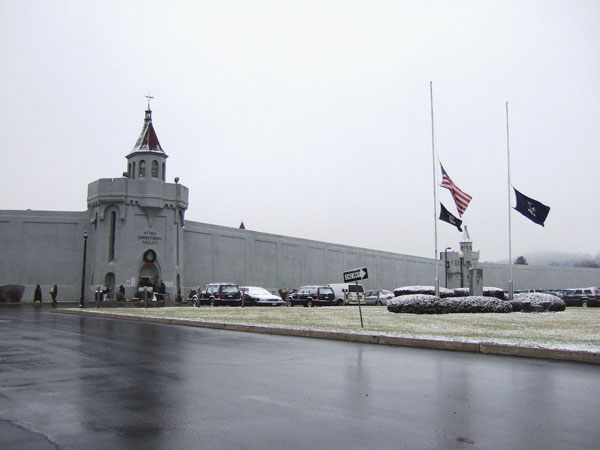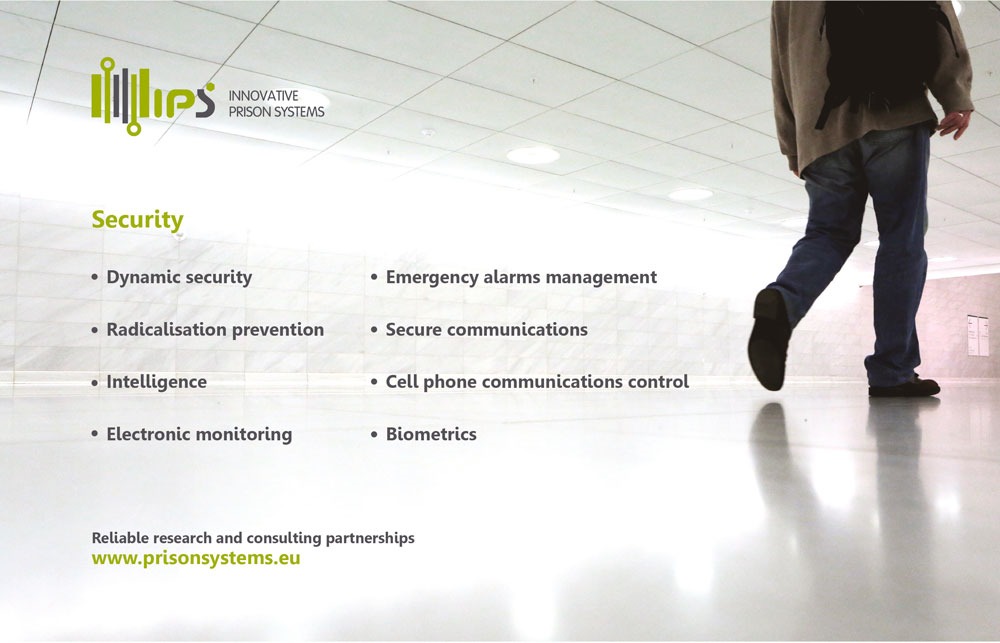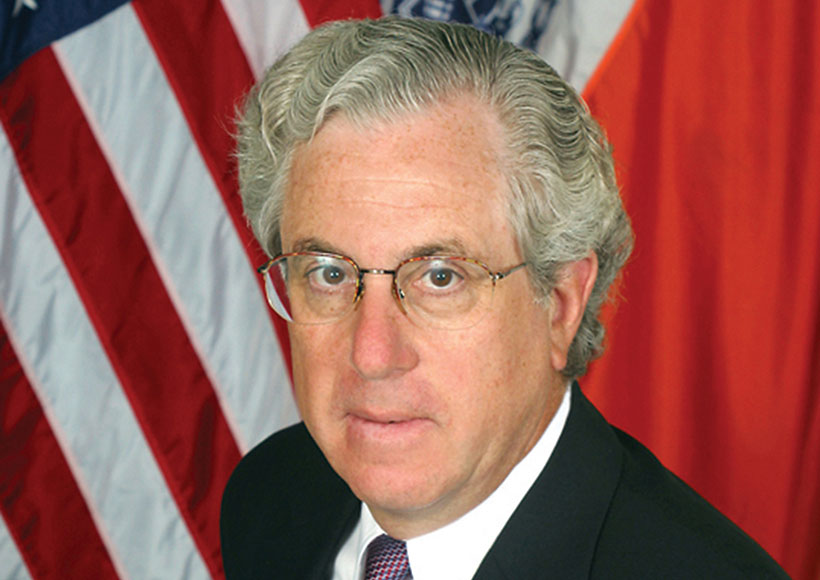// Interview: Martin F. Horn
Executive Director of the New York State Permanent Commission on Sentencing, New York, USA
JT: You started working in the correctional sector in the State of New York in 1969 as a parole officer, and you have retired in 2009 after having led the New York City Department of Corrections for six years.
What were the main changes that occurred in New York corrections throughout your career?
MFH: I started two years before the Attica prison riot and that was a very dramatic turning point for corrections in New York State as well as nationally. It was the beginning of an awareness of the importance of running prisons professionally, of providing adequate services and programs, of concern for human dignity and rights, of training, and so on.
It was the dawning of a new progressive age in prisons and it continued for some time. As a result, conditions in prisons around the country have improved dramatically.
The other big change that you can’t ignore is technology which has dramatically changed prisons. The technology, the smartphones, the cell phones, that sort of devices have, in some ways, made the idea of imprisonment obsolete.
The nature of separating a person from the community is now defeated by the cell phone which is why they’re so desirable to inmates and so valuable. But, at the same time technology has allowed us to improve security, surveillance, the perimeter of security, movement control etc.

JT: What do you consider to have been your greatest achievements while you were leading the New York corrections?
MFH: New York City corrections is a “tough beat”, it’s a tough assignment under any circumstance and it was certainly the toughest job that I ever had.
I’m very proud of the fact that, during my tenure, we kept the jails safe and made them even safer: that was my primary focus. We took a very data-driven approach to inmate and staff safety and we were incredibly successful in getting levels of violence (inmate on staff/staff on inmate/inmate on inmate) down to historically low levels that they have not seen since I left.
Furthermore, we substantially reduced the incidence of suicides in jails, in my last year I think there were zero suicides, so, we really made a dent in suicide prevention. To me, the most basic function of the prison/jail is to keep the public, the prisoners and the staff safe.
The other thing that I’m very proud of is that we began a re-entry program that we called “Discharge Planning” – which focused on the elements that I consider to be so important: sobriety, housing and jobs – that has continued to this day. It marked a growing awareness that jail could be an opportunity to intervene in people’s lives and address some of the issues that were causing them to be arrested.
We worked very hard and eventually spent many millions of dollars that are still being spent – in fact they built upon it since I’ve left – first of all, to identify people when they come to jail with mental illness and issues of housing and addiction and to try and direct them into community-based services upon their release.
When an individual leaves prison, three elements are critical to their success and they all have to be addressed simultaneously: sobriety, housing and employment.
JT: Could you please explain those elements – sobriety, housing and jobs – in more detail?
MFH: I have always been sceptical that prisons are a place where we can actually rehabilitate people – I’m not sure what it means, how we measure it, and how we know when it has occurred.
And, interestingly, recently, I read a study that evaluated the programs that were funded under the United States government’s Second Chance Act (during the Bush Administration Congress passed this bill that funded a lot of re-entry efforts) and just recently the National Institute of Justice published the reports of the evaluative studies and what they found was that a lot of these programs did not have any treatment effect, they didn’t succeed. And I think that’s because too often we focus on the wrong things.
So, I firmly believe – and my experience tells me that this is true – that when an individual leaves prison those three elements are critical to their success and they all have to be addressed simultaneously: the first of these is sobriety, the second is housing and the third is employment. And they’re interrelated: if you don’t have a job you can’t afford a place to live, if you don’t have a place to live and you’re living on a street, you’re likely to return to your addiction… So, if a person leaves prison and doesn’t stay sober, and goes to live on the street, or doesn’t have a job that’s a recipe for failure, the cycle repeats!
Unfortunately, governments fail to make the necessary investments in helping people to stay sober, find a place to live and to find a job. If we made greater and more thoughtful investments in subsidised housing, transitional employment and relapse prevention we would have greater success.



JT: We learned that in your retirement speech you revealed that you had this one disappointment: the fact that you have not been able to change the culture of Rikers Island Jail Complex one bit. (Source: The Atlantic, “Can a Notorious New York City Jail Be Closed?” April 26, 2016).
What culture is that and what is your feeling knowing that Rikers Island is due to be shut down?
MFH: I’ve always felt that part of the problem with New York City corrections was its insularity: the fact that the most of the prisoners are on this one island where there are ten different jails. It creates an insular culture among the staff – I sometimes compared it to the old advertisement for Las Vegas that said “What happens in Las Vegas stays in Las Vegas”, and the same could be said of Rikers Island.
That was dangerous! It was a culture that demonised the prisoners – it was a way for the city and society to stigmatise them by saying that they had to be sent to this remote island and that symbolic act gave license to the officers to treat the prisoners as less than fully human beings, entitled to the protection of human dignity. And it led to a culture of violence that persists to this day.
I was disappointed that I couldn’t succeed in opening jails off Rikers Island – I tried hard but I didn’t have the political support that the effort has today. The proposal of shutting down Rikers Island is commendable, certainly, I understand why it needs to be done and I support it, but I think it’s going to be difficult to accomplish.



My greatest concern is that all of the time and effort that goes into that may be at the expense of time and effort that needs to be spent continuing to make the jails that exist today safe. There’s evidence that even while the number of people in the city-jails has been going down, they’ve become far less safe than they were at the end of my term. In this business, you can’t take your eye off the ball and, by that, I mean that one has to focus on the safety and security of the jails that you have today.
I also think that the idea that you can replace it with four buildings in the boroughs may be a little naive. When push comes to shove, the physical realities of space and cost are going to make it very difficult to build the kind of jails that people envision on the sites that have, so far, been publicly identified.
We may end up with jails that are too large, high-rise jails that are going to be very difficult to operate and unrealistic. I think that because of cost, value engineering that will ultimately have to occur will result in compromises that will diminish the quality of the buildings that are built.
The proposal of shutting down Rikers Island is commendable and I support it, but I think it’s going to be difficult to accomplish.
JT: In an interview, you have said that: “as a society, we have become addicted to the use of prisons”. (Source: NSL Experience: Never Stop Learning, “Martin Horn Discusses Prison Reform”, 30/12/2017).
In your opinion, how did this “addiction” develop and what is the right path “to heal” it?
MFH: Our reliance on incarceration [in the U.S.] has a history that goes back to Jim Crow: if you read Michelle Alexander’s book, if you watch Ava DuVernay’s documentary “13th”, if you read the National Academies report, that was written by Jeremy Travis and Bruce Western, you begin to understand the roots.
But the real point of departure, for me, was the 1968 presidential election, when Richard Nixon and his team recognised that if they were going to pry the presidency away from the historical FDR coalition they needed to somehow break the southern states away from the north and the west, and they did it by playing the race card. They didn’t play the race card directly, but they talked about law and order, which became a code for racism.
That coincided with a real spike in crime that was caused by the cresting of the baby boom generation (there were more people in the crime-prone age group) and that coincided with the heroin epidemic, with the peaking of the civil rights and the anti-war movements…
All of it created a perception in the public’s collective mind that the country was in crisis and that we had a problem of law and order and it allowed politicians to play to those fears.
And the only thing politicians can do about law and order is pass new laws and that’s exactly what happened. So, beginning in the 1968-1972 period new laws were passed that increased the penalties to widen the net of the criminal justice system and that coincided with the actual scientific improvements in law enforcement (the advents of DNA, of automated fingerprint reading systems and improved crime-solving techniques) all of which led to the growth of imprisonment.
It suited the needs of a lot of people, and as a result, the country did not rely on alternative dispositions… It’s like the old adage: they say that if the only tool in the carpenter’s belt is a hammer every problem looks like a nail. Well, if the only sceptical in our response to crime is imprisonment, then every problem looks like one that requires imprisonment!
If the only tool in our response to crime is imprisonment, then every problem looks like one that requires imprisonment!
JT: You are the Executive Director of the New York State Permanent Commission on Sentencing which was established in October 2010 by the then-Chief Judge Jonathan Lippman.
[The Commission serves in an advisory capacity to the Chief Judge and is charged with evaluating sentencing laws and practices and recommending reforms].
What are the visible results of this Commission’s work towards New York’s criminal justice system?
MFH: The two things that we are most proud of are that we were the first body to put forward a concrete recommendation to raise the age of criminal responsibility which ultimately happened – the state legislature took action two years ago.
And the second thing: we’ve put forward a very thoughtful, very carefully-constructed, proposal to rationalise the structure of sentencing in New York – because we have a very confusing sentencing structure: some crimes we see the determinant sentence, some crimes receive an indeterminate sentence, among the crimes that we see determinant sentences there are two types…
So we’ve put forward a proposal to make the sentencing fully determinate for all crimes except the most serious homicides. Unfortunately, the New York State legislature seems incapable of addressing issues of this complexity in the absence of some sort of crisis.
There continues to be, in the current political environment, what I refer to as a demonisation of the people in our custody.
JT: How do you envisage the future of the criminal justice system across the USA, in general, and in the State of New York, in particular?
MFH: On the one hand I’m optimistic because I think those of us who have laboured in the field learned and know what we need to do. On the other hand, I think that there continues to be, in the current political environment, what I refer to as a demonisation of the people in our custody.
The people who are serving a sentence are our fellow citizens and they don’t lose their human dignity have their criminal conviction or their sentence. I think we have to have a greater focus on the human dignity and recognise that notwithstanding what people have done they’re coming home to our communities and that we have a continuing obligation to their success.
//
Martin F. Horn is a Distinguished Lecturer at John Jay College of Criminal Justice, in New York City (NYC) since 2009. Moreover, he is the Executive Director of the New York State Permanent Commission on Sentencing. Was Commissioner of the NYC Department of Correction and Department of Probation (2003-2009) and Secretary of the Pennsylvania Department of Corrections (1995-2000). Prior to that, he had been the Executive Director of the New York State Division of Parole for ten years, between 1985 and 1995. Martin Horn holds a B.A. in Government from the Franklin & Marshall College and a Master of Arts in Criminal Justice awarded by the John Jay College.
Advertisement





